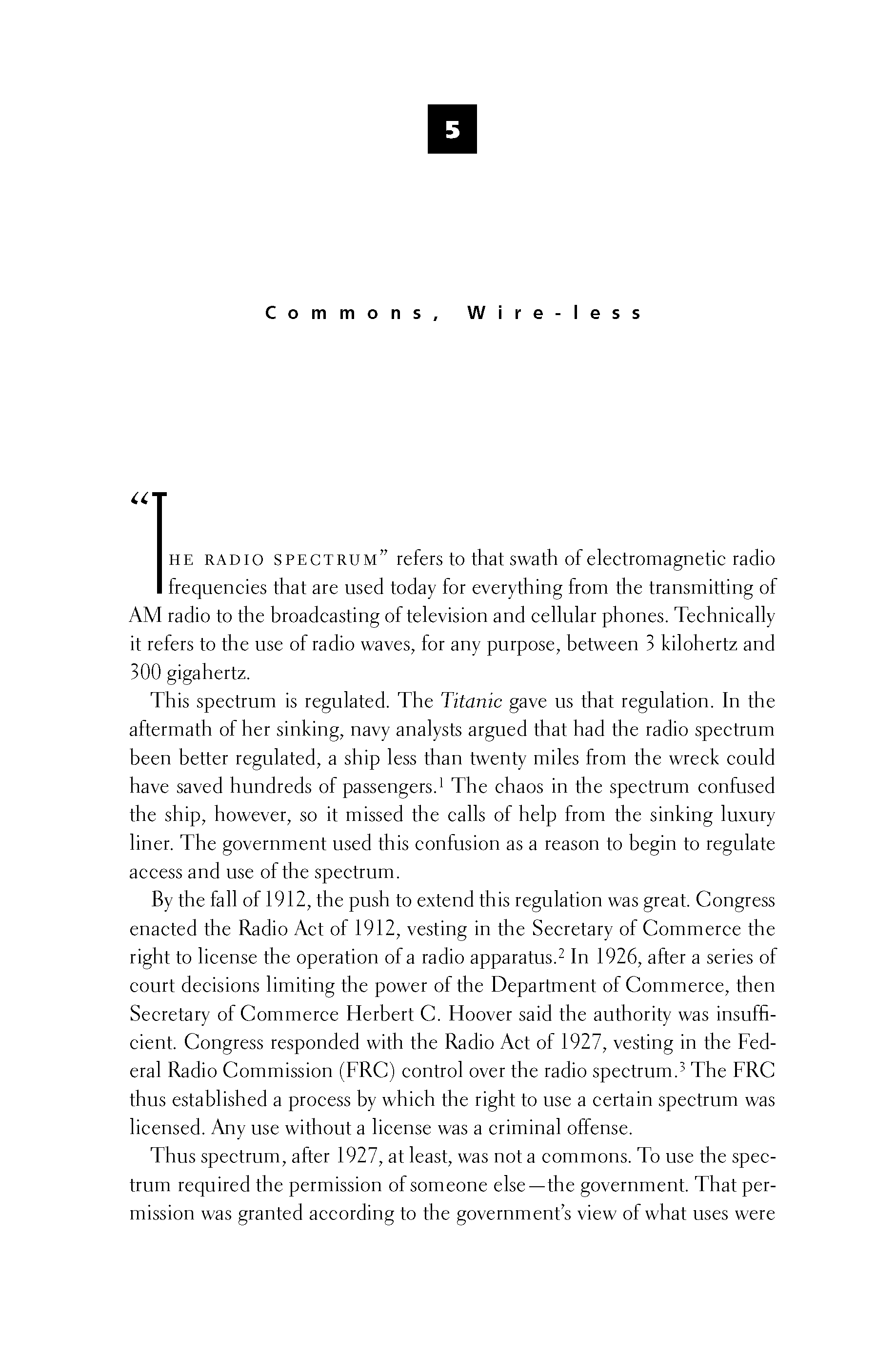 p072 _
-chap- _
toc-1 _
p073w _
toc-2 _
+chap+ _
p074
p072 _
-chap- _
toc-1 _
p073w _
toc-2 _
+chap+ _
p074
"The radio spectrum" refers to that swath of electromagnetic radio
frequencies that are used today for everything from the transmitting of
AM radio to the broadcasting of television and cellular phones. Technically
it refers to the use of radio waves, for any purpose, between 3 kilohertz and
300 gigahertz.
This spectrum is regulated. The _Titanic_ gave us that regulation. In the
aftermath of her sinking, navy analysts argued that had the radio spectrum
been better regulated, a ship less than twenty miles from the wreck could
have saved hundreds of passengers.[5-1] The chaos in the spectrum confused
the ship, however, so it missed the calls of help from the sinking luxury
liner. The government used this confusion as a reason to begin to regulate
access and use of the spectrum.
By the fall of 1912, the push to extend this regulation was great. Congress
enacted the Radio Act of 1912, vesting in the Secretary of Commerce the
right to license the operation of a radio apparatus.[5-2] In 1926, after a series of
court decisions limiting the power of the Department of Commerce, then
Secretary of Commerce Herbert C. Hoover said the authority was insuffi-
cient. Congress responded with the Radio Act of 1927, vesting in the Fed-
eral Radio Commission (FRC) control over the radio spectrum.[5-3] The FRC
thus established a process by which the right to use a certain spectrum was
licensed. Any use without a license was a criminal offense.
Thus spectrum, after 1927, at least, was not a commons. To use the spec-
trum required the permission of someone else -- the government. That per-
mission was granted according to the government's view of what uses were
[[73]]
p072 _
-chap- _
toc-1 _
p073w _
toc-2 _
+chap+ _
p074